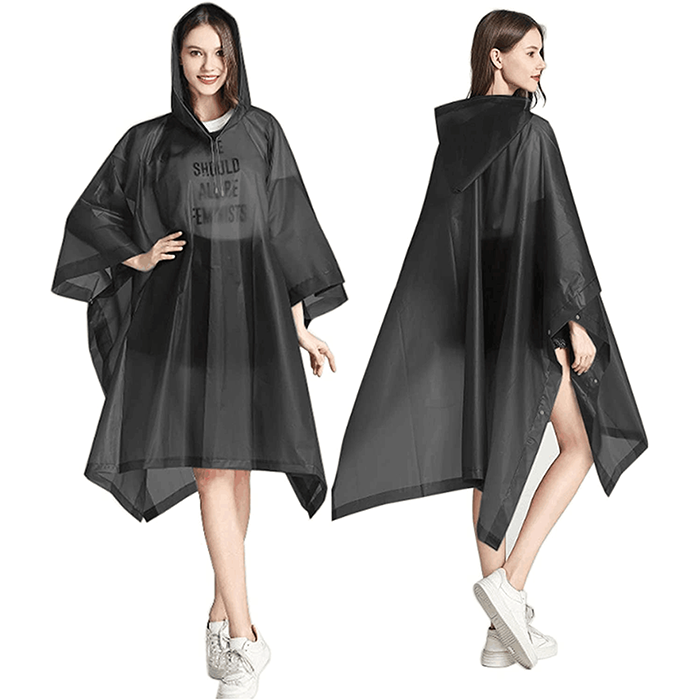 rainwears@163.com may@may-rain.com
rainwears@163.com may@may-rain.com Mon to Friday: 8.00 am - 7.00 pm
Mon to Friday: 8.00 am - 7.00 pm
Raincoat Options for a 4% Discount Over 25 Years of Use
The Evolving Raincoat A 205-Year Journey of Innovation and Style
Raincoats have long been an essential garment, offering protection against the elements while reflecting personal style. The journey of the raincoat spans over two centuries, marking significant advancements in materials, design, and cultural significance.
The history of the raincoat can be traced back to the early 19th century, around 1819, when the first rubberized fabric was invented. Charles Macintosh, a Scottish chemist, developed a method for fusing rubber between layers of fabric, creating the first modern waterproof raincoat. This invention marked a turning point, as it transformed the way people dressed during inclement weather. Prior to this, individuals relied on simple oilcloth or waxed fabrics, which were often stiff and uncomfortable. Macintosh's innovation allowed for greater mobility and comfort, setting the stage for the raincoat's evolution.
The Evolving Raincoat A 205-Year Journey of Innovation and Style
The mid-20th century saw further advancements in raincoat technology. The development of synthetic materials revolutionized the industry. Nylon and polyester fabrics emerged, offering lightweight and durable options that were also waterproof. These materials made raincoats affordable and accessible to the general public, allowing for widespread adoption. By the 1960s and 1970s, raincoats were available in a myriad of colors and designs, appealing to a young and vibrant audience. Fashion designers began to incorporate raincoats into their collections, cementing them as a staple piece in wardrobes worldwide.
4 5 years raincoat

Fast forward to the 21st century, and the raincoat continues to evolve. The demand for sustainability has prompted brands to explore eco-friendly materials and production processes. Many companies now offer raincoats made from recycled plastics and organic fabrics, appealing to environmentally conscious consumers. Additionally, advanced technologies such as waterproof membranes and breathability features have further enhanced the functionality of raincoats. Modern designs prioritize both style and performance, ensuring that individuals can stay dry without sacrificing fashion.
The cultural significance of raincoats has also been highlighted in films, music, and art throughout the years. Iconic characters donning raincoats have left a lasting impression, from the film noir detectives in their dark trench coats to the whimsical figures in classical paintings. Moreover, in contemporary pop culture, raincoats symbolize resilience and hope, often worn during protests or movements advocating for change. This association with social causes adds depth to the garment's identity, transforming it into a powerful symbol of an individual's values.
As we look ahead to the future of raincoats, one can only imagine the possibilities. With advancements in smart technology, we might soon see raincoats equipped with temperature-regulating materials, built-in LEDs for visibility, or even weather-predicting capabilities. The raincoat of the future will likely merge fashion, technology, and sustainability, catering to the needs of a changing world.
In conclusion, the raincoat has undergone a remarkable transformation over the past 205 years, evolving from a basic waterproof garment to a stylish, multifunctional piece of fashion. As we continue to navigate the challenges of climate change and shifting societal values, the raincoat will undoubtedly adapt, maintaining its relevance as an enduring symbol of style and practicality in the face of the elements.
-
Children's Fashion Waterproof Printed Raincoats | Kids Gear
NewsJul.31,2025
-
Silver Printed Women’s Jacket – Stylish, Lightweight & Trendy Outerwear
NewsJul.30,2025
-
Fashionable Design Long Raincoat Rain Poncho Waterproof Polyester
NewsJul.30,2025
-
High Lighting Reflective Rain Jacket Windbreaker Safety Jacket for Adult
NewsJul.29,2025
-
Disposable PE Rain Poncho - Lightweight, Waterproof, Easy to Carry
NewsJul.29,2025
-
Stylish Lady Coat Women Jacket – Trendy & Elegant Outerwear
NewsJul.29,2025































